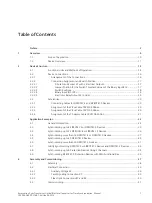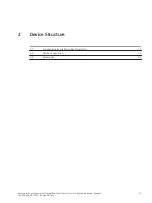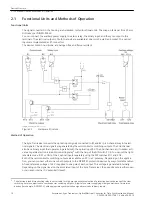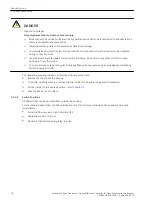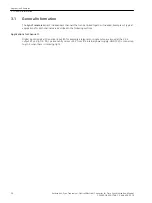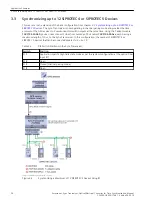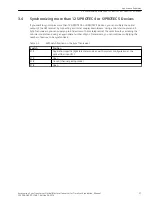
[dw_S1 pos_language-independent, 1, --_--]
Figure 2-3
DIP Switch S1, Factory Setting
(1)
Binary input BI 2
(2)
DIP switch S1
(3)
Outputs, electronic load disconnecting relay K2
(4)
Fiber-optic connections R1 and R2
Switch
Position
Meaning
DIP S1/1
Open
8
Off
Light idle state: OFF
Optical fiber, channel 1
Closed
On
Light idle state: ON
Optical fiber, channel 1
DIP S1/2
Open
Off
Light idle state: OFF
Optical fiber, channel 2
Closed
On
Light idle state: ON
Optical fiber, channel 2
DIP S1/3
Open
Off
2-channel mode (separate channels)
Closed
On
Channel pairing mode (connected channels)
DIP S1/4
Open
Off
Electronic load disconnecting relay inactive
Closed
On
Electronic relay active
Binary Input BI 2 (X5)
The relatively slow but interference-free binary input BI 2 with a wide input voltage range is used, for example,
to detect the minute pulse for synchronizing the SIPROTEC 3 devices.
This input operates in parallel with the optical input R2. However, a signal must not be present simultaneously
at R2 and BI 2.
The binary input BI 2 is not suitable for fast operations. To allow for processing, the pulse must be present for
more than 5 ms. The pickup voltage can be increased to about 75 V using a jumper.
Electronic Relay Output K2 (on X6)
The electronic relay output K2 is a fast, electronic load disconnecting relay for triggering the binary inputs of
SIPROTEC 3 devices using the voltage from the station battery.
2.2.2.4
2.2.2.5
8
Bold = Factory setting
Device Structure
2.2 Device Connections
Accessories, Sync Transceiver, Optical/Electrical Converter for Time Synchronization, Manual
19
C53000-G9050-C168-1, Edition 09.2019



